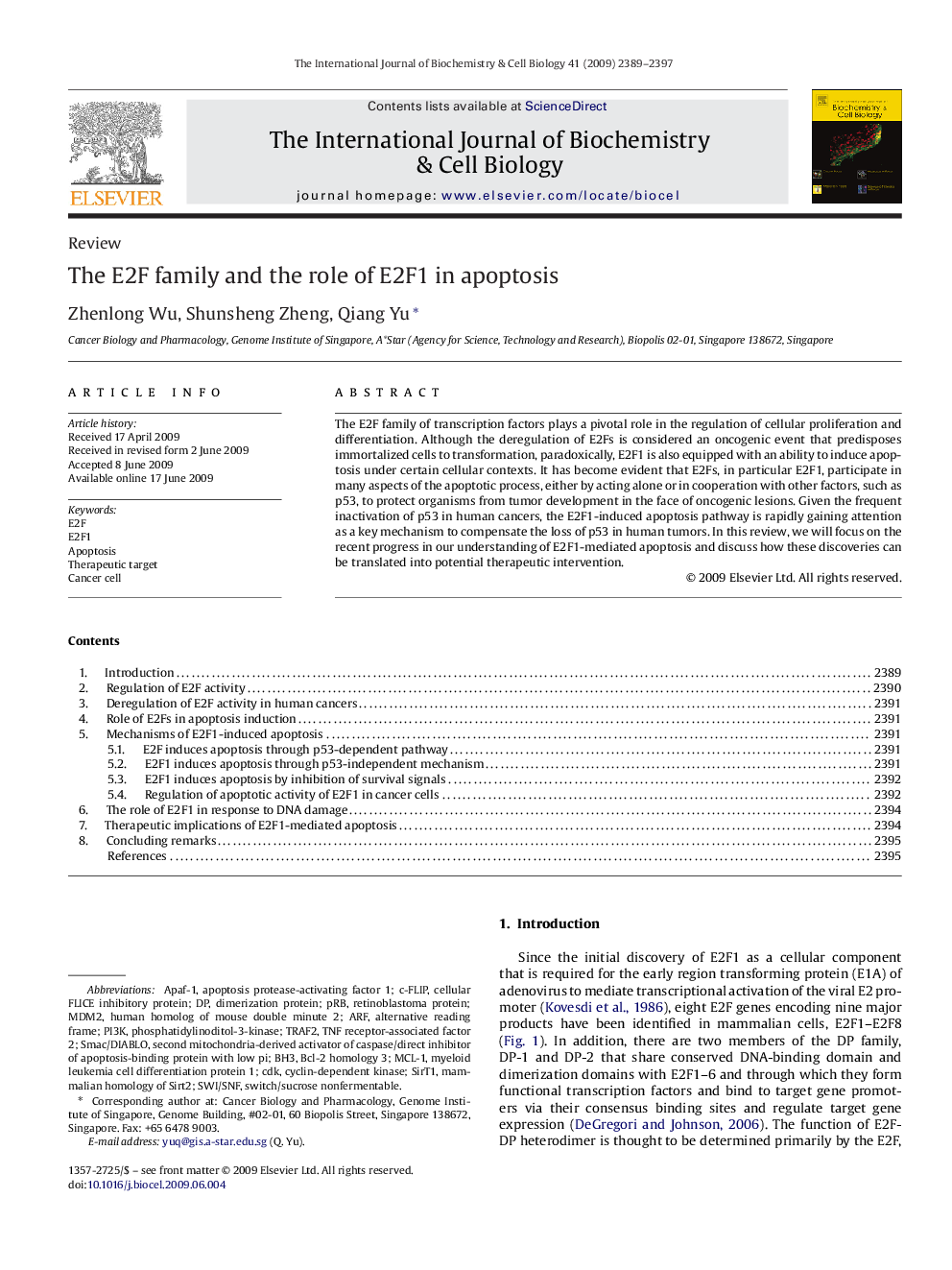| Article ID | Journal | Published Year | Pages | File Type |
|---|---|---|---|---|
| 1984193 | The International Journal of Biochemistry & Cell Biology | 2009 | 9 Pages |
The E2F family of transcription factors plays a pivotal role in the regulation of cellular proliferation and differentiation. Although the deregulation of E2Fs is considered an oncogenic event that predisposes immortalized cells to transformation, paradoxically, E2F1 is also equipped with an ability to induce apoptosis under certain cellular contexts. It has become evident that E2Fs, in particular E2F1, participate in many aspects of the apoptotic process, either by acting alone or in cooperation with other factors, such as p53, to protect organisms from tumor development in the face of oncogenic lesions. Given the frequent inactivation of p53 in human cancers, the E2F1-induced apoptosis pathway is rapidly gaining attention as a key mechanism to compensate the loss of p53 in human tumors. In this review, we will focus on the recent progress in our understanding of E2F1-mediated apoptosis and discuss how these discoveries can be translated into potential therapeutic intervention.
